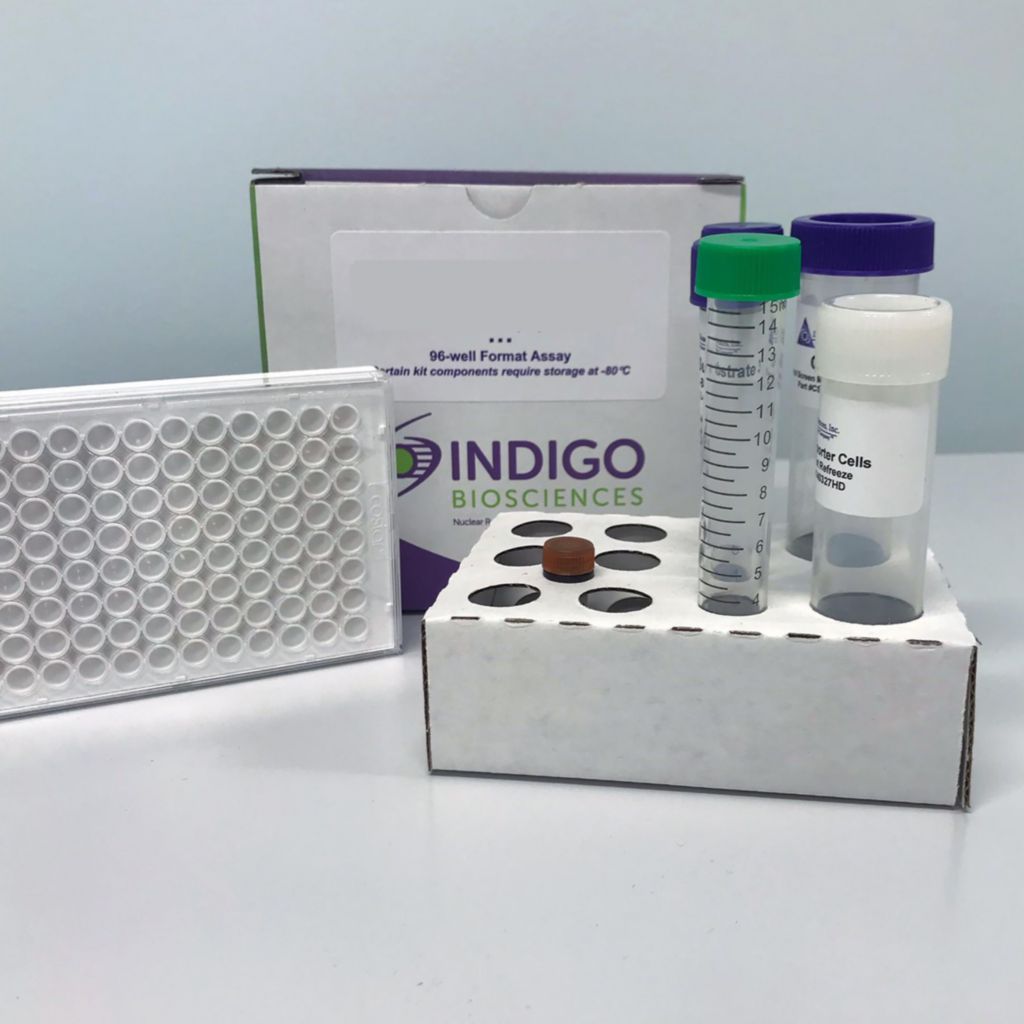Product Description and Product Data
This is an all-inclusive cell-based luciferase reporter assay kit targeting the Cynomolgus Monkey Progesterone Receptor (cPGR). INDIGO’s cPGR reporter assay utilizes proprietary non-human mammalian cells that have been engineered to provide constitutive expression of the cPGR. In addition to cPGR Reporter Cells, this kit provides two optimized media for use during cell culture and in diluting the user’s test samples, a reference agonist, Luciferase Detection Reagent, and a cell culture-ready assay plate. The principal application of this assay is in the screening of test samples to quantify any functional activity, either agonist or antagonist, that they may exert against cPGR. This kit provides researchers with clear, reproducible results, exceptional cell viability post-thaw, and consistent results lot to lot. Kits must be stored at -80C. Do not store in liquid nitrogen. Note: reporter cells cannot be refrozen or maintained in extended culture.
Features
Clear, Reproducible Results
- All-Inclusive Assay Systems
- Exceptional Cell Viability Post-Thaw
- Consistent Results Lot to Lot
Product Specifications
| Target Type | Nuclear Hormone Receptor, Nuclear Receptor Orthologs | ||
| Species | Cyn Monkey | ||
| Receptor Form | Native | ||
| Assay Mode | Agonist, Antagonist | ||
| Kit Components |
| ||
| Shelf Life | 6 months | ||
| Shipping Requirements | Dry Ice | ||
| Storage temperature | -80C |
Data
Target Background
INDIGO’s Cyn Monkey Progesterone Receptor (cPGR) Reporter Assay System utilizes proprietary human cells engineered to provide constitutive, high-level expression of the full-length Cynomolgus Monkey Progesterone Receptor (nr3c3), a ligand-dependent transcription factor.
INDIGO’s Reporter Cells include the luciferase reporter gene functionally linked to a monkey PGR-responsive promoter. Thus, quantifying changes in luciferase expression in the treated reporter cells provides a sensitive surrogate measure of the changes in monkey PGR activity. Luciferase gene expression occurs after ligand-bound PGR undergoes nuclear translocation, DNA binding, recruitment and assembly of the co-activators and accessory factors required to form a functional transcription complex, culminating in expression of the target gene.
Also available as a service

